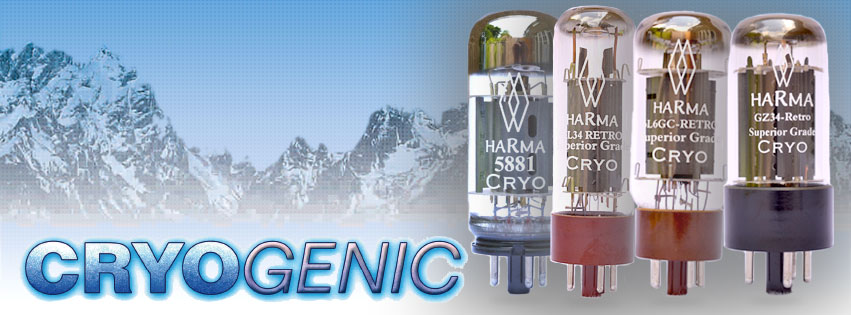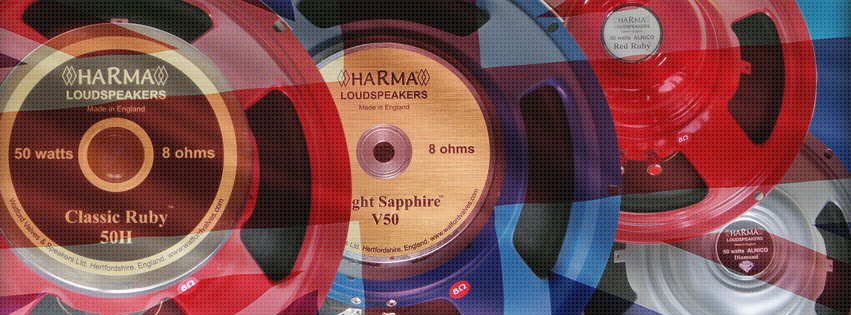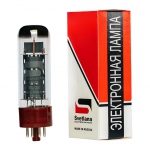Harma Cryo / 6N1P VI-HARMA CRYO
BACK
All prices contained on this page are exclusive of VAT. This is currently charged at 20% and is payable by the UK only.
All prices contained on this page are exclusive of VAT. This is currently charged at 20% and is payable by the UK only.
Harma Deep Cryogenic treated valves offers improvements to the sonic character of the valves and results in sound characteristics only normally found in very expensive NOS valves such as Mullards.
The process involves taking the vacuum tubes and freezing them down to -312 Fahrenheit and soaking these for a minimum of 12 hours. Then the temperature is held at this low level for 24 hours. The vacuum tubes are then slowly brought up to normal levels over the next 12 hours.
Metals respond very well to deep cryogenic process. The reasons are as follows, during the cooling or solidification phase of the manufacturing process, molecules are trapped in a haphazard pattern. This is down to stress caused in the bending and welding of the anode plate material. This random placement causes obstacles for electrons and when encountered this interference can cause noise, slow down electron flow and sound deterioration affecting the quality of the sound of the vacuum tube. .
At very cold temperatures (below -312 Fahrenheit), the molecules will align in a more uniform, compact structure through the removal of kinetic energy. When the material is returned to ambient temperature, this new uniform, compact pattern is maintained, Thus changing the structure of the nickel permanently. This process makes a permanent change and the benefits do not deteriorate over time or upon return to operating temperature, it changes the whole way the vacuum tube performs.
The biggest benefits I have found have been a dramatic improvement in the sound quality. The bass response has been clearer with reduction in microphonics and clear more transparent highs. Cryogenic treatment has now become a way for a modern valve to produce a sound quality that approaches the iconic originals.
The Harma 6N1P VI Cryo is a cryogenically treated special long life, low noise selected version of the 6N1P. The valve was designed for military application and had a life expectancy of 5000 hours. Metals respond very well to deep cryogenic process. The reasons are as follows, during the cooling or solidification phase of the manufacturing process, molecules are trapped in a haphazard pattern. This is down to stress caused in the bending and welding of the anode plate material. This random placement causes obstacles for electrons and when encountered this interference can cause noise, slow down electron flow and sound deterioration affecting the quality of the sound of the vacuum tube. .
At very cold temperatures (below -312 Fahrenheit), the molecules will align in a more uniform, compact structure through the removal of kinetic energy. When the material is returned to ambient temperature, this new uniform, compact pattern is maintained, Thus changing the structure of the nickel permanently. This process makes a permanent change and the benefits do not deteriorate over time or upon return to operating temperature, it changes the whole way the vacuum tube performs.
The biggest benefits I have found have been a dramatic improvement in the sound quality. The bass response has been clearer with reduction in microphonics and clear more transparent highs. Cryogenic treatment has now become a way for a modern valve to produce a sound quality that approaches the iconic originals.
The VI version was factory balanced with each triode section selected to very tight
Military parameters after a long burn in process.
The Cryo version has more top end transparency and more treble detail. The Cryo enhances the mid band which results in greater mid band depth and clearer bottom end, it has the effect of it detailing the highs and tightening the lows.
The valve has a better audio performance than standard 6N1P as it has very low distortion, lower noise and has a higher plate dissipation rating when compared to an ECC88, 6922 type. The better sonic performance, lower noise and lower distortion is due to the design of the valve. The valve has 50 % less noise than a standard 6N1P type and was factory selected to provide this.
The 6N1P VI has a larger cathode than E88CC and 6922 types which results in longer life and more transient current capability.
Due to the valves performance many customers have used these to replace E88CC 6922 types in their equipment. When replacing a 6DJ8, ECC88, E88CC and 6922 types with a 6N1P VI you will need to consult the manufacture to ensure your equipment can take the upgrade.
The differences is the 6N1P VI has a filament current of 0.55 Amps and ECC88, E88CC & 6922 types have a filament current of 0.36 Amps. If you amp can take this valve then it is an Audio bargain.
Sonically they are fast dynamic and richly musical. The cryo treated version further enhances this valves performance over the standard item by giving a tighter and more musical bass response. The midband has more clarity and detail especially on vocals. The top end is also more detailed and smoother providing a warm and transparent sound.
The Harma 6N1P VI is fully equivalent to the Chinese made 6N1 valve and offers greatly improved performance.
All Harma preamp valves are Dynamically Drive tested under real working condition have passed the following tests:
Gain (db) Drive Tested)
Transconductance (gm) Drive Tested
Output Drive Tested
Noise 1 (signal to noise)
Noise 2 (Aural)
Microphonics Test 1(Ambient)
Microphonic Test 2 (Shock)
Cathode Test
Grid Leakage Test
 Valves
Valves Cryo Valves
Cryo Valves Kits
Kits Speakers
Speakers Pedals
Pedals Amp Parts
Amp Parts Cabinets
Cabinets Accessories
Accessories







Tweet